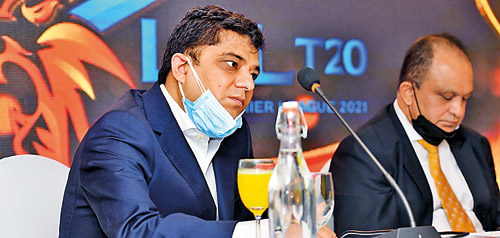Does LPL really serve SL’s desired purpose?

Not a single edition has gone without some sort of dispute since Anil Mohan's IPG took over LPL
As Sri Lanka Cricket turns its attention to the 5th edition of the Lanka Premier League (LPL), set to take place from July 1 to 21, anticipation and excitement are in the air. The tournament, spanning the cities of Kandy, Dambulla, and Colombo, promises to deliver high-octane cricket featuring a host of international stars.
However, beneath the financial success of this T20 extravaganza lies a brewing controversy and a concerning question about the true impact of the LPL on Sri Lankan cricket.
This year, the LPL boasts an impressive roster of international cricketers. Colombo Strikers have secured the services of Pakistani all-rounder Shadab Khan, New Zealand’s dynamic Glenn Phillips, Afghanistan’s explosive batter Rahamanulla Gurbaz, and Bangladesh’s pace sensation Taskin Ahmed.
Dambulla Sixers, having rebranded following a scandal involving their previous owner, are represented by South African Reeza Hendricks, Bangladesh’s Towhid Hridoy and Mustafizur Rahman, and Afghan talents Mohammed Nabi and Ibrahim Zadran.
Galle Marvels have drafted England’s Alex Hales, Zimbabwe’s Sean Williams, Afghan spinner Mujeeb ur Rehman, and South African Owane Pretorius. Jaffna Kings’ lineup includes Afghan stars Azmatullah Omarzai and Noor Ahmad, South African Rilee Rossouw, and West Indian Fabian Allen. Defending champions B-Love Kandy will rely on West Indian Andre Fletcher and Bangladesh’s Mohammed Hasnain and few others to spearhead their campaign.
Despite these foreign players, the LPL has not been without its controversies. The tournament’s reputation took a hit when the owner of the Dambulla franchise was arrested on charges of planning to engage in corrupt activities during the tournament. This scandal led to the disbandment of the original franchise and the formation of the Dambulla Sixers under new ownership. While the swift action taken by the organisers to address the issue is commendable, the incident casts a shadow over the tournament’s integrity and the management of the league.
Financially, the LPL has been a boon for both players and the Sri Lankan cricket board. The influx of international players not only raises the profile of the tournament but also attracts substantial sponsorship deals and broadcasting revenue. For many Sri Lankan domestic cricketers, the LPL offers a lucrative platform that might not be available through domestic competitions alone. This financial injection is crucial for the players, providing them with opportunities to support their careers and families.
However, the financial benefits seem to come with a warning. The LPL’s glittering success has not translated into an improvement in the standard of domestic cricket. This is starkly evident from Sri Lanka’s recent performance in international tournaments.
At the ongoing T20 World Cup, Sri Lanka’s early exit in the first round highlighted the team’s struggles with adapting to the modern white-ball format. The team’s inability to compete at the highest level raises questions about the effectiveness of the LPL in fostering homegrown talent and enhancing the overall quality of white-ball cricket in the country.
While the LPL brings international exposure and financial gain, it has fallen short in developing a robust pipeline of talent capable of performing on the global stage. To address these challenges, the Sri Lankan cricket board and LPL organisers need to strike a balance between the commercial aspects of the tournament and its developmental goals.
This could involve providing ample opportunities to home grown talent to shine alongside international stars. Introducing more stringent anti-corruption measures and ensuring transparent governance will also be crucial in maintaining the league’s credibility.


